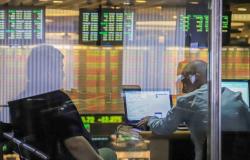
Market analysts began to raise doubts about what will be the dynamics of the Central Bank reserves (BCRA) in the second semester. It is that after the strong recomposition of recent months, there will be a strong rebound in the demand for foreign currency for imports, debt payments in foreign currency, a lower seasonal settlement of agriculture and a lower incentive for exporters due to the delay in the rate. official exchange rate.
Since the beginning of the Government of Javier Milei, on December 11, the BCRA, led since then by Santiago Bausili, accumulated purchases in the exchange market for more than USD 17,000 million. This allowed gross reserves to go from USD 21,209 million to USD 29,113 million, while net reserves jumped from negative USD 11,220 million to a red of USD 2,000 million according to private calculations.
These results were possible due to the impact of the 54% devaluation at the beginning of the Milei administration and due to the quotation of access to foreign currency to pay for imports. Added to this was the lower demand for foreign currency due to the recession and the reversal of the energy balance, mainly due to the start-up of the Néstor Kirchner Gas Pipeline.
However, as the months go by, some of these points will change trend. According to data from Gabriel Caamanofrom the consulting firm Ledesma, the BCRA paid 67% of accrued imports in April, that is, a level similar to that of September 2023. That ratio grew from 23% in December, 41.2% in January and 59.8% in March.
In those five months, the commercial debt amounted to USD 12,760 million, the difference between what was paid and what was accrued, as Caamaño pointed out. That gap It explained a large part of the BCRA purchases but since June it will begin to be reversed.
In this regard, the consulting firm Invecq pointed out that 100% of imports began to be paid, added to a rebound in activity and limited access to the exchange market, the monetary authority could lose USD 13,000 million compared to the first.
About that, the alarms go off a delay in harvest settlement. “Agriculture liquidates what is necessary to cover its costs and not much more. But this is not something for this specific week, but rather it applies to the entire campaign,” said the consulting firm Econviews.
The Government denies every opportunity that there is a delay in the exchange rate, although analysts point out the opposite. “Although May-August are usually the months with the highest volume of exports –due to the thick harvest–, the level of the real exchange rate (RER) will have to be closely monitored. Although the government insists that it is not behind, and maintains its strategy of crawling peg At 2%, the RER is already 4% below the January-November 2023 average,” Invecq detailed.
“If it continues to appreciate, it could delay the settlement of currencies in the MLC; and, although a rebound is expected, agriculture could sell only what is necessary to cancel commitments and/or buy inputs -financed in pesos at negative real rates-, waiting for a better price,” highlighted the consultant.
In that sense, Econviews warned about the decrease in the pace of purchases shown by the monetary authority: “In daily terms, the average purchases fell from USD 167 million to USD 115 million in these two months respectively. If we shorten the period of analysis, the deceleration is even more noticeable, going from USD 548 million accumulated last week to USD 115 million today.”
“This decrease in the pace of BCRA purchases is happening in a context where international reserves are at negative USD 2,101 million. On the horizon are the first Bopreal amortizations and payments to bondholders in July. April, May, June and July are the strong months where you should accumulate a lot of reserves. The last months of the year will be more challenging,” they warned.
A report circulating in Peronism ensures that unless foreign currency enters based on new loans from banks or international organizations, the BCRA would begin to have negative results in its daily operations in the Exchange Market since mid-June. This analysis does not contemplate a new deferral of payment for imports.
“There is no incentive for the agricultural complex to liquidate more foreign currency than it liquidated in May. The complex needs to liquidate in August when it needs to buy inputs for the new planting campaign for the second half of the year,” the report states.
The report indicates that fewer BCRA purchases could put pressure on devaluation expectations on financial dollars, “with a possible widening of the gap above 50%.”
If the current exchange rate system is maintained, Invecq stated, In the second semester the BCRA would become a net seller and you could even lose what you gained during the first part of the year. Help could come from the entry of private capital, although with the current restrictions that seems almost impossible.
“In this way, the one who could bring some air to the government is the IMF: more disbursements, within the framework of a new program, could be the card that allows, among other things, to dismantle the exchange restrictions, and therefore continue with the cleaning up the BCRA balance sheet,” Invecq concluded.





